| Columns Retired Columns & Blogs |
$2,500 is a problem because it's "too cheap" explains 33.3 promoted marketing pretty well.
Tony in Venice
ps. appropriate Phono Cartridges are too expensive ( ridiculously expensive ) or even other worldly expensive
When he reviewed Channel D's Lino C 2.0 phono preamplifier in his June 2019 Analog Corner column, Michael Fremer wrote, "My ears instantly accepted its combination of drop-dead, noise-free backgrounds and lack of obvious colorations or sonic personality." He concluded, "After a few months of listening, my initial enthusiasm and appreciation for the Lino C 2.0 continues." I had been impressed when I performed the measurements to accompany MF's review of Channel D's earlier Seta L phono preamplifier in August 2010 (so much so, in fact, that I purchased the review sample), so I asked for a sample of the Lino C 2.0 to measure.
Like the Seta L, the Lino C 2.0 is powered by a rechargeable battery. However, that's where the resemblance ends. Whereas the Seta L used conventional voltage-mode circuitry, the Lino operates in current mode, amplifying the output current generated by a moving-coil cartridge (footnote 1). Its input impedance is effectively a short circuit. I measured the Channel D Lino C 2.0 with my Audio Precision SYS2722 system (see the January 2008 "As We See It"), which is intended for use with voltage-mode devices. I therefore used the adaptor lead I had constructed to measure the Sutherland Little Loco phono preamplifier. I soldered a precision 10k ohm resistor in series with each of pins 2 and 3 of a male XLR plug, then soldered a 10 ohm resistor between those two pins. The Audio Precision's balanced output stage would thus see an appropriately high 20k ohm load, but the signal presented to the preamplifier would be typical of an MC cartridge. This setup attenuated the Audio Precision's signal level by 67dB, a 1kHz signal with a level of 1V resulting in 437µV at the preamplifier's input.
After performing preliminary testing with this cable, I continued the testing with a two-channel, balanced attenuator module supplied by Channel D's Rob Robinson. This performs the same function as my cable but offers adjustable attenuation; I set it to reduce the signal level by 66dB. It can also be adjusted to simulate different cartridge source impedances; I left it at the default setting of 6 ohms. The following measurements were made with the Channel D module but were no different than the ones I took with my own adaptor cable, other than being in stereo rather than mono.
The Lino was operated on battery power for the testing. The preamp preserved absolute polarity, and its output impedance was a low 73 ohms, balanced, and 10 ohms, unbalanced, from 20Hz to 20kHz.
Each channel of the Lino has DIP switches to increase the gain by 6dB or 12dB compared with a nominal value (footnote 2). (The switches are concealed by rubber covers on the Lino's bottom panel.) With the switches set to the medium position, "+6dB," I measured a gain at 1kHz of 69dB, which is a little on the high side for a moving-coil cartridge. Setting the switches to "0dB" reduced the gain by exactly 6dB; with them set to "+12dB," the gain was increased by 5.93dB compared with the medium-position gain.
The Lino featured superbly accurate RIAA equalization, the best I have measured (fig.1). This graph also reveals the extremely close channel matching. Channel separation was excellent—greater than 86dB in both directions above 1kHz (fig.2). The Lino's unweighted, wideband S/N ratio, measured with the input shunted with the 6 ohm resistor and with the medium gain setting, was a good 63.3dB (average of both channels), ref. 1kHz at 500µV. Restricting the measurement bandwidth to 22Hz–22kHz increased the ratio to a respectable 65dB, while switching an A-weighting filter into circuit increased it further, to 72.2dB.
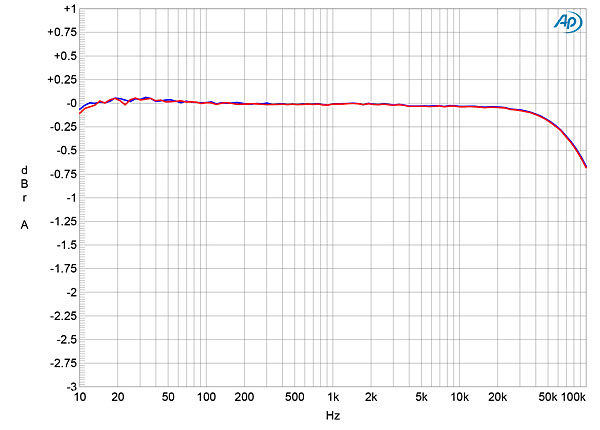
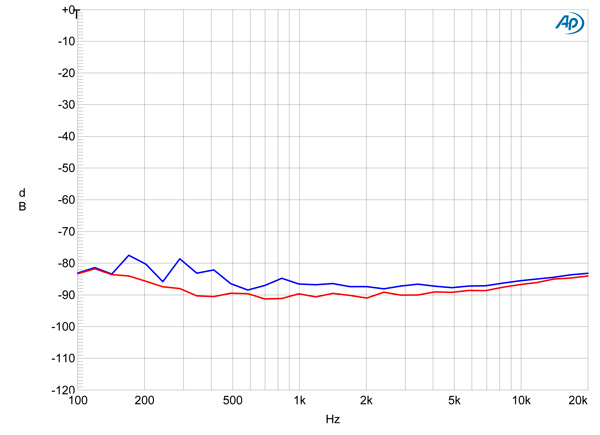
Spectral analysis of the Lino's low-frequency noise floor with the input shunted by the 6 ohm resistor (fig.3) revealed that random noise components were very low in level. (I had to hold the attenuator module well away from the analyzer's host computer in order to prevent the unshielded and relatively high-impedance module from picking up some interference at 60Hz and 180Hz from the PC's power supply.)
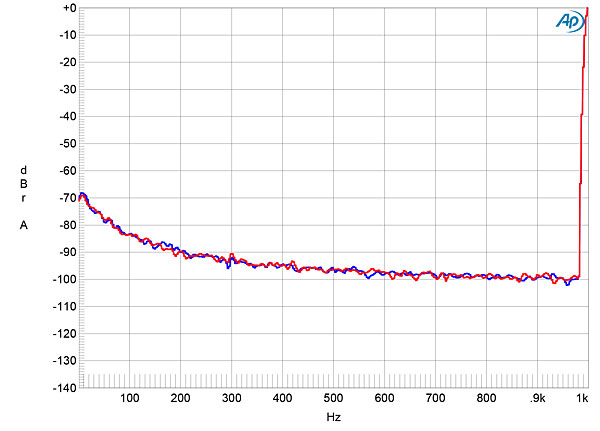
The Channel D Lino C 2.0 offered vanishingly low distortion before the onset of clipping. Fig.4 shows the spectrum of the Lino's output with the input fed 1kHz at 1mV. No distortion harmonics can be seen above the noise floor! When I reduced the load impedance to the punishing 600 ohms, the third harmonic made an appearance, but this was at –87dB (0.004%). The Channel D also had extremely low levels of intermodulation distortion (fig.5). With its gain set to "0dB," the Lino's overload margin was a good 14.65dB across the band, though this margin decreased by 6dB for each 6dB increase in gain. I recommend Lino owners use the lowest gain setting that gives acceptable loudness with their favorite moving-coil cartridge.
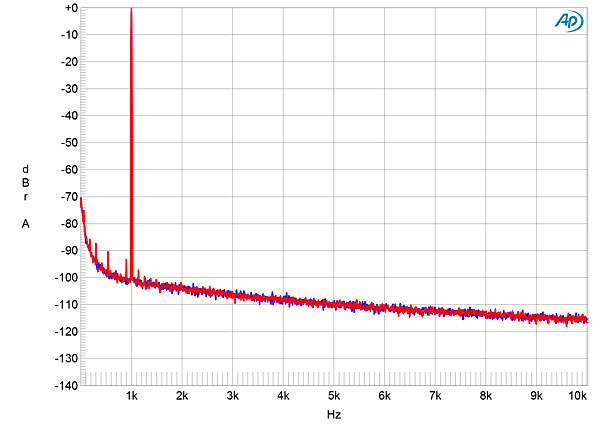
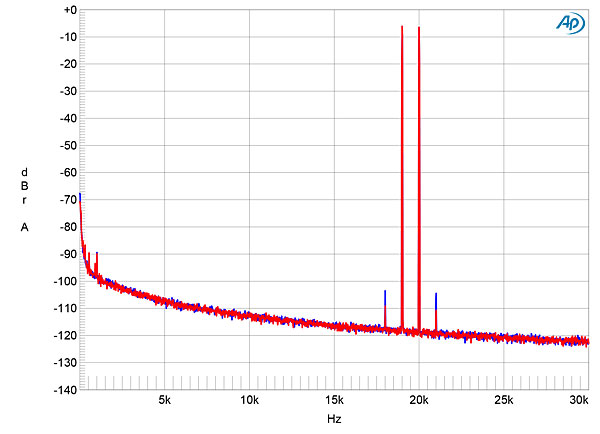
Considering its superbly accurate RIAA equalization, low noise, and vanishingly low distortion, I am not surprised that Michael Fremer was impressed by the Lino C 2.0's sound quality.—John Atkinson
Footnote 2: Other DIP switches allow the RAA equalization to be disabled, to optimize the Lino for needle drops made with Channel D's Pure Vinyl app.

$2,500 is a problem because it's "too cheap" explains 33.3 promoted marketing pretty well.
Tony in Venice
ps. appropriate Phono Cartridges are too expensive ( ridiculously expensive ) or even other worldly expensive

A couple of examples of cartridges that work very well with this preamp are the Hana SL MC and Ortofon Quintet Black, at $750 and $999 respectively. Don't know if you define that as ridiculously expensive?

The reviewer mentions the cartridge price issue.
I agree, the incredible prices for some of his reviewed phono cartridges are other worldly.
Tony in Venice

Hi JA1,
I always enjoy the measurements section. You describe making an attenuator of two 10k and one 10 ohm resistors. The Lino would then see a source resistance very close to 10 ohms, but in your results you talk about a 6 ohm source resistor. What did I miss?
TiA,
13DoW

... Initially, JA1 used a fixed adapter that he made using one 10 ohm and two 10K resistors.
Channel D then supplied an adapter, which allowed adjustment of both attenuation and source resistance. JA1 indicated that he set the source resistance to 6 ohms.

That is what I missed! Thanks :)

... battery-powered unit that uses integrated circuits in the audio signal path?
If so, given that he disparaged products employing such a configuration, could it be arranged for AD to conduct a follow-up review?

As the XV-1s has a 6 ohm impedance I'm guessing it's a very good match for the Lino C or is there something more to consider?
Are there high quality RCA to XLR connectors that won't break the bank?

Channel D used a Dynavector DRT XV-1s and a Lino C 2.0 at the NYC audio show in November 2019 (was not listed in the program, a last-minute addition to the exhibitors). A reviewer from parttimeaudiophile judged the sound as "Best of Show Runner Up: very involving sound."
The Lino C 2.0 ships with a set of RCA to XLR adapters, but for best performance the interconnect should be balanced; that is, shielded twisted pair (two independent conductors plus shield), with pin 1 of the XLRs not connected to any signal connection, just the shield.

Thank you for your comments. Appreciated. I'm probably going to upgrade this year and need to create a shortlist.

What a surprise! LOL
Mikey you have to put us on a private email list when you announce these bargains!

Per Channel D website: "Notice of Price Increase: due to compounded across-the-board supplier price increases since 2017, the price of the Lino C 2.0 will be increasing by 12 percent from $2499 to $2799 when the stock for our current production run is exhausted (about March 2020)."
It's simply the government tariffs coming to roost, and existing stock being exhausted, is all.